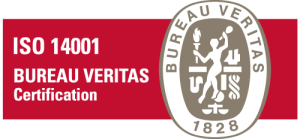Navigating the paperwork for international trade can feel endless, but documents like the Binding Tariff Information (BTI) are crucial for smooth operations. If you’re involved in import and export within the European Union, understanding the BTI is essential for ensuring customs compliance and maximizing efficiency.
In this comprehensive guide, we’ll detail what a BTI is, why it’s a vital tool under the Union Customs Code (UCC), and how to obtain it.
What is Binding Tariff Information?
Es un documento oficial emitido por las autoridades aduaneras de un Estado miembro de la UE. Especifica de forma definitiva la clasificación arancelaria de las mercancías que se pretende importar o exportar.
As an essential tool in international trade and logistics, the BTI provides an official and binding response from customs regarding your product’s classification. This certainty is critical for regulatory compliance and the correct application of tariffs, duties, and trade policy measures.
Legal Framework and Validity
The BTI is a cornerstone of EU customs legislation, its relevance solidified by the Union Customs Code (UCC).
- Binding Nature: The classification decided by the BTI is legally binding on all EU customs administrations and on the specific person or entity holding the BTI (the holder).
- Pan-European Validity: is valid at all customs offices throughout the European Community, dramatically facilitating cross-border trade.
- Duration: the validity is for a period of three years from the date of its issuance, providing a stable basis for long-term commercial planning.
El solicitante de una BTI suele ser el importador o exportador que busca un código arancelario preciso para sus mercancías.
Why Use a BTI? Key Functions
While not always a legal requirement, the BTI is highly recommended for any operator engaged in commercial activities in the EU due to its significant benefits:
- Guarantees Correct Tariff Classification: It ensures your products are declared under the appropriate code in the TARIC (Integrated Tariff of the European Union) system, avoiding errors and costly misinterpretations.
- Provides Legal Certainty: The document establishes an undeniable classification, protecting you from differing opinions across EU customs offices.
- Risk Mitigation: minimizes the risk of sanctions, fines, customs delays, or unexpected duty adjustments that can arise from incorrect classification.
What Information Include?
The official BTI notification is a standardized document that must contain the following core information:
- A reference number for the document.
- The issuing customs authority.
- The name and address of the holder (note: the BTI is not transferable).
- A detailed description of the goods, including commercial name (brand and model) and any identifiers.
- The tariff code under which the goods are classified, along with the rationale for that classification.
- The date of issue and the period of validity.
Applying for a BTI: Requirements and Process
Any importer or exporter within the European Union (EU) can apply for a BTI.
- Establishment: The applicant must generally be a legal entity established in the EU.
- Identification: The company or individual must possess an EORI number (Economic Operators Registration and Identification number).
Economic operators established outside the EU must first be registered with the relevant customs authorities to apply.
Requirements for the Application
Before submitting, ensure you meet these key requirements:
- Be a legal entity (or registered operator).
- Have a valid EORI (Customs Purposes Identification Number).
- Submit the application in writing (often electronically) to the competent customs authority.
- Provide a precise description of the products that will be consistently used in all subsequent import or export declarations.
How to Obtain a BTI: The Process
Obtaining a BTI involves a structured process overseen by EU customs:
- Application Submission: The applicant submits a written request to the designated customs authority, typically via an online platform.
- Classification Determination: The customs administration analyzes the product based on the Harmonized System (HS), Combined Nomenclature (CN), and the TARIC system to determine the correct 10-digit tariff code.
- Issuance and Dissemination: The BTI is issued to the holder. The classification information is then sent to the European Commission in Brussels, where it is entered into the European BTI database, ensuring accessibility and binding validity across all Member States.
The integration of the BTI into the Union Customs Code (UCC) highlights its essential nature for transparency and efficiency in a digitalized global trade environment. It’s a key pillar for businesses seeking simplified procedures and long-term stability in their commercial operations.
By securing a BTI, you establish a solid, three-year foundation for your trade costs and compliance, streamlining the flow of goods, reducing administrative costs, and mitigating regulatory risk across the EU.




